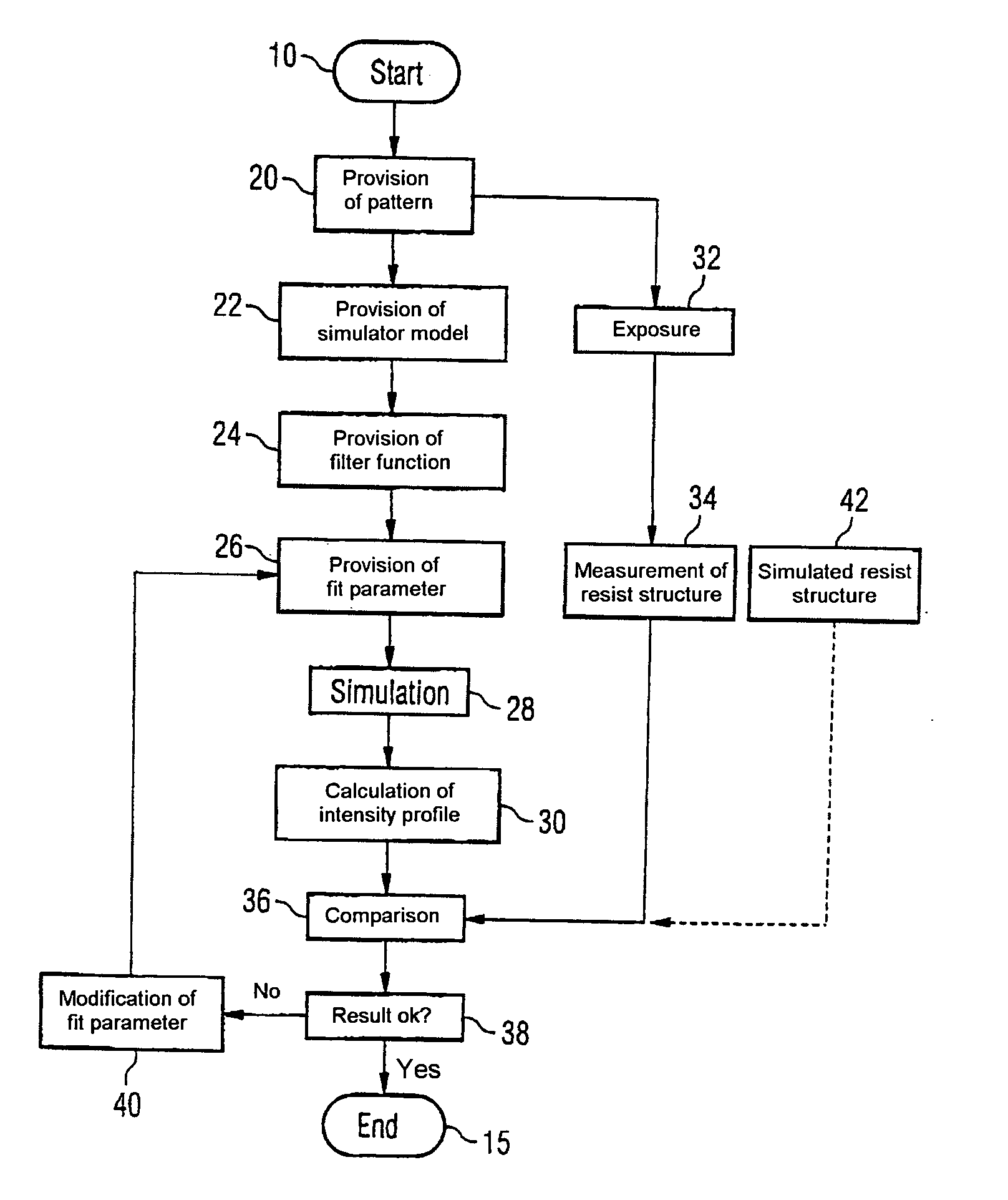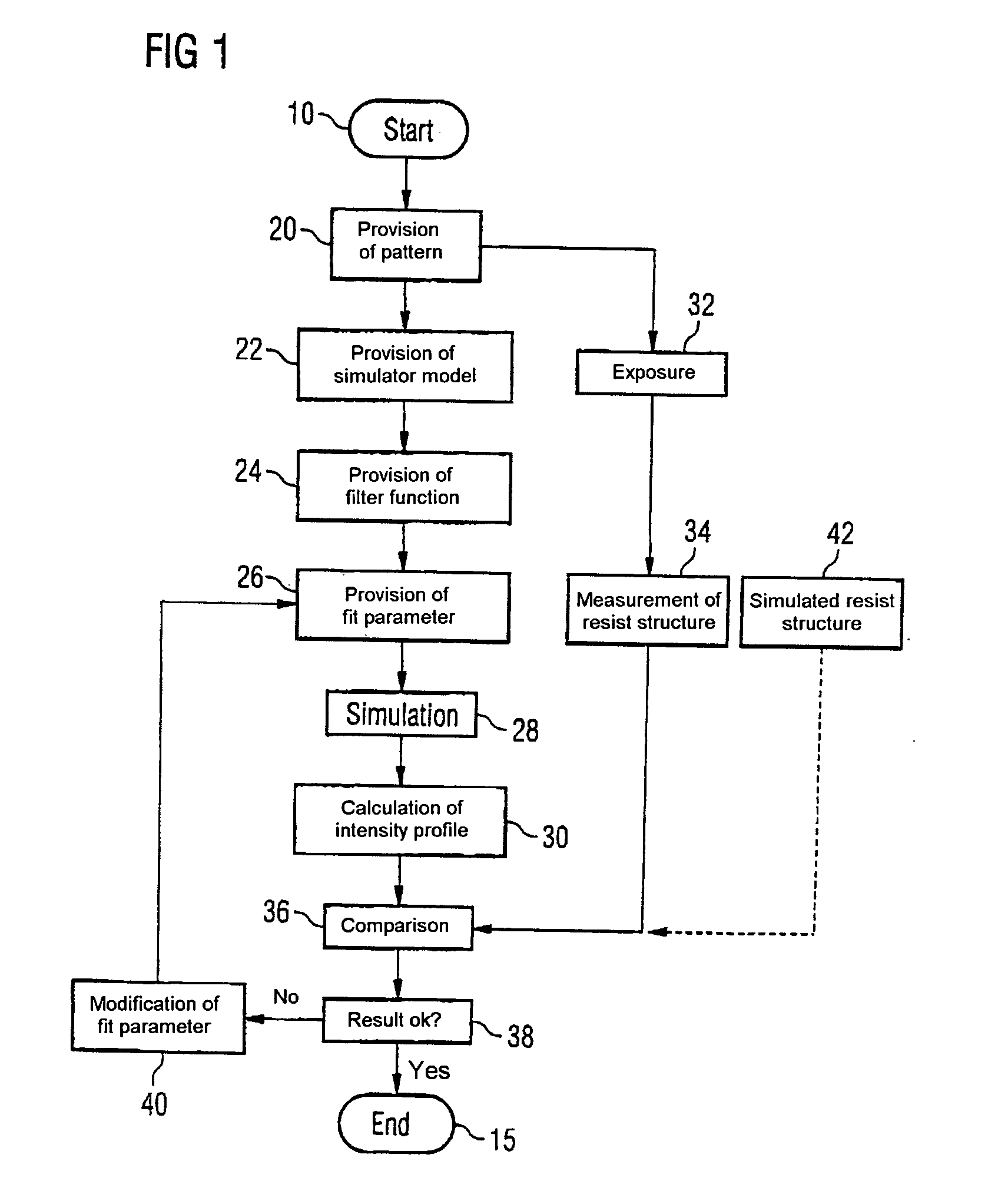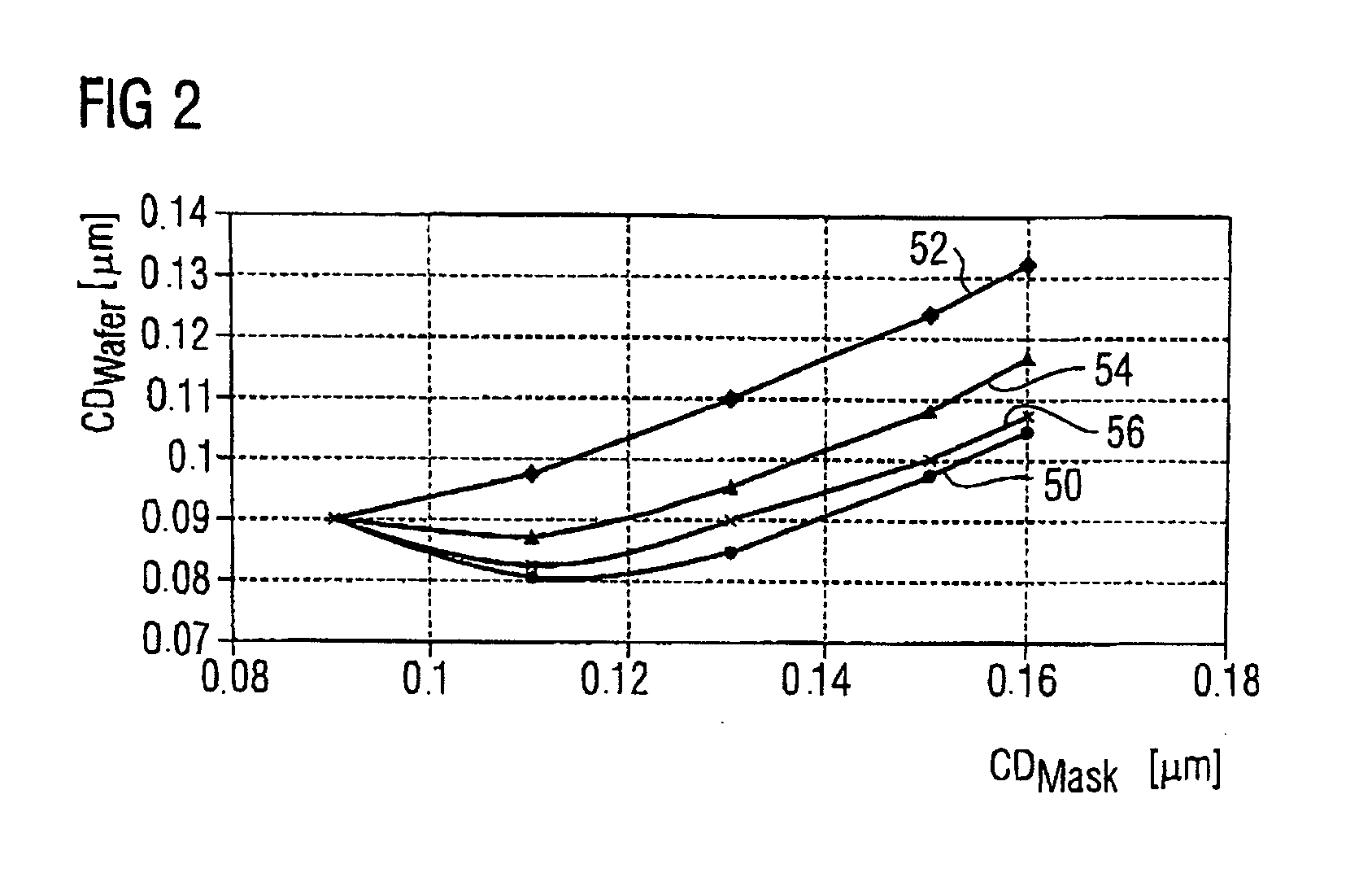Method for improving a simulation model of photolithographic projection
a simulation model and photolithographic technology, applied in the field of methods for improving the simulation model of the photolithographic projection, can solve the problems of reducing the circuit pattern, the inability to use simulation models in a large-area application, and the errors of two-dimensional models often used
- Summary
- Abstract
- Description
- Claims
- Application Information
AI Technical Summary
Benefits of technology
Problems solved by technology
Method used
Image
Examples
Embodiment Construction
[0025] In accordance with the present invention, an OPC process flow for the calculation of OPC structures of a circuit pattern is described below. An optimization of the geometry of the mask structures and, if appropriate, of further lithography parameters is usually carried out in the OPC process flow. However, the method according to the invention is also suitable for other calculations that require a simulation of a large-area circuit pattern.
[0026]FIG. 1 shows an embodiment of the method according to the invention in the form of a flow diagram. OPC structures serve for altering the linewidth of specific structure elements of the circuit pattern, so that it is possible to compensate for specific imaging errors during the transfer of the circuit pattern into a resist layer of a semiconductor wafer. OPC structures are understood to mean for example structures designated by serifes or hammerheads, likewise including the targeted alteration of linewidths or the addition of fine str...
PUM
 Login to View More
Login to View More Abstract
Description
Claims
Application Information
 Login to View More
Login to View More - R&D
- Intellectual Property
- Life Sciences
- Materials
- Tech Scout
- Unparalleled Data Quality
- Higher Quality Content
- 60% Fewer Hallucinations
Browse by: Latest US Patents, China's latest patents, Technical Efficacy Thesaurus, Application Domain, Technology Topic, Popular Technical Reports.
© 2025 PatSnap. All rights reserved.Legal|Privacy policy|Modern Slavery Act Transparency Statement|Sitemap|About US| Contact US: help@patsnap.com



